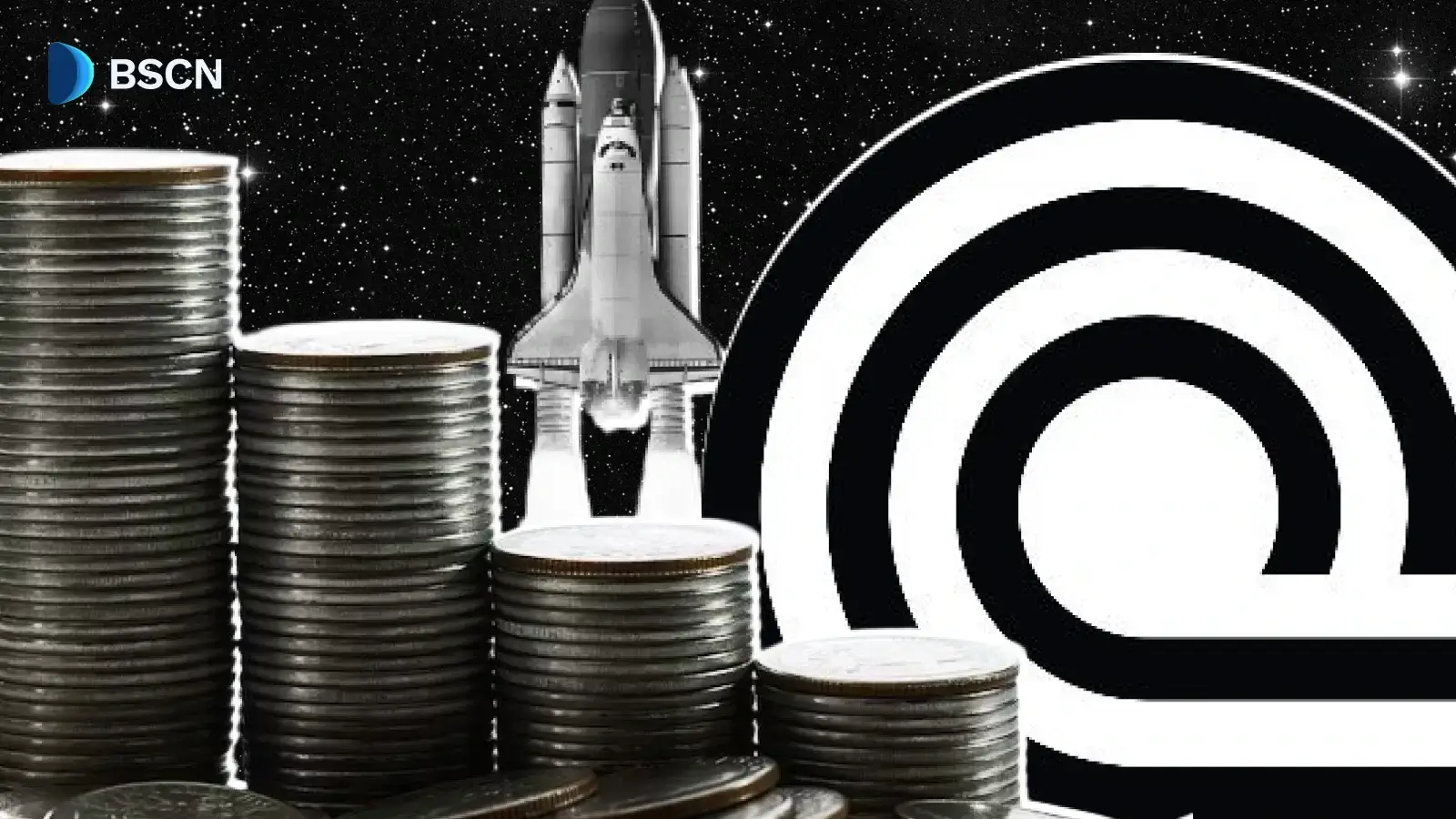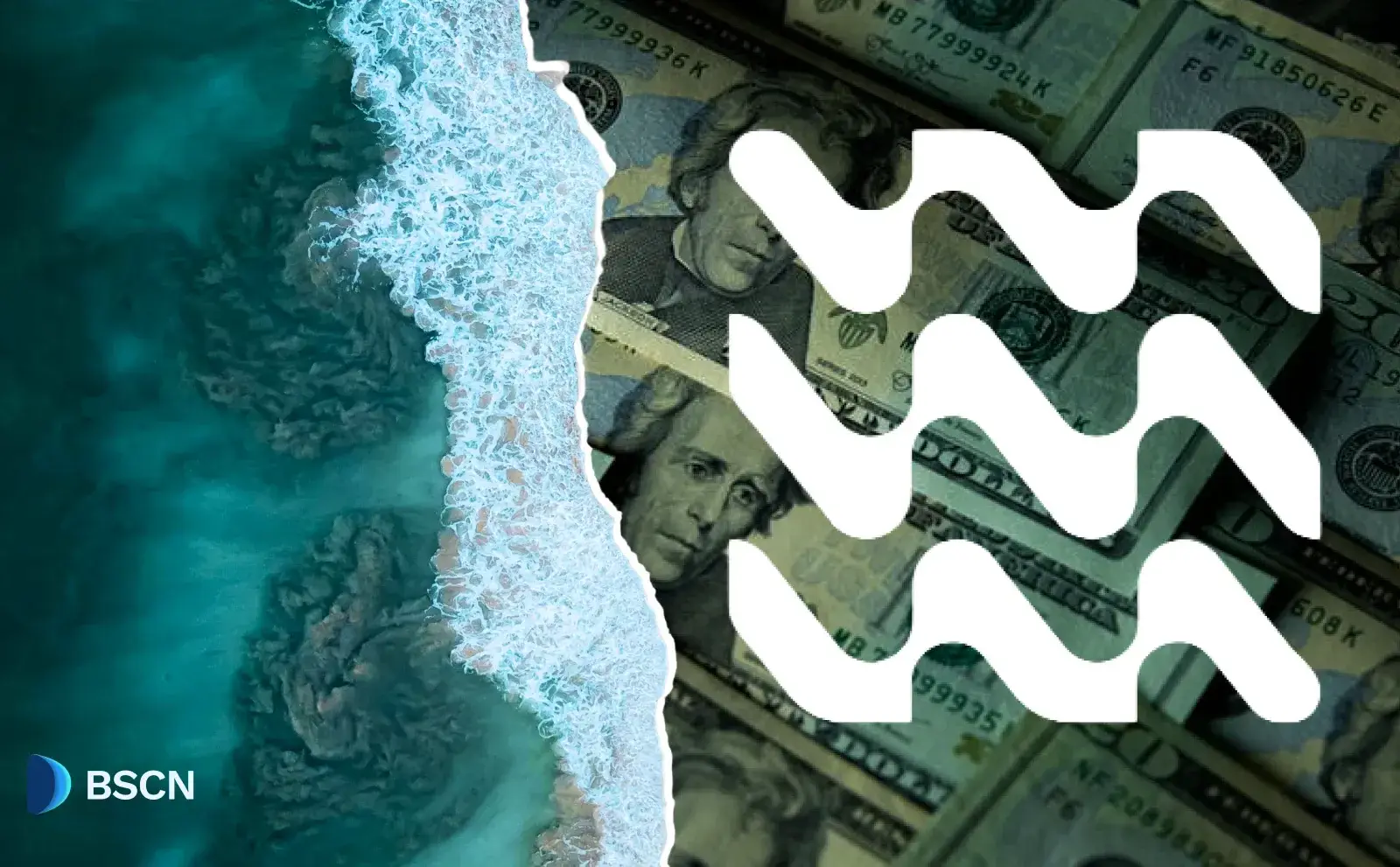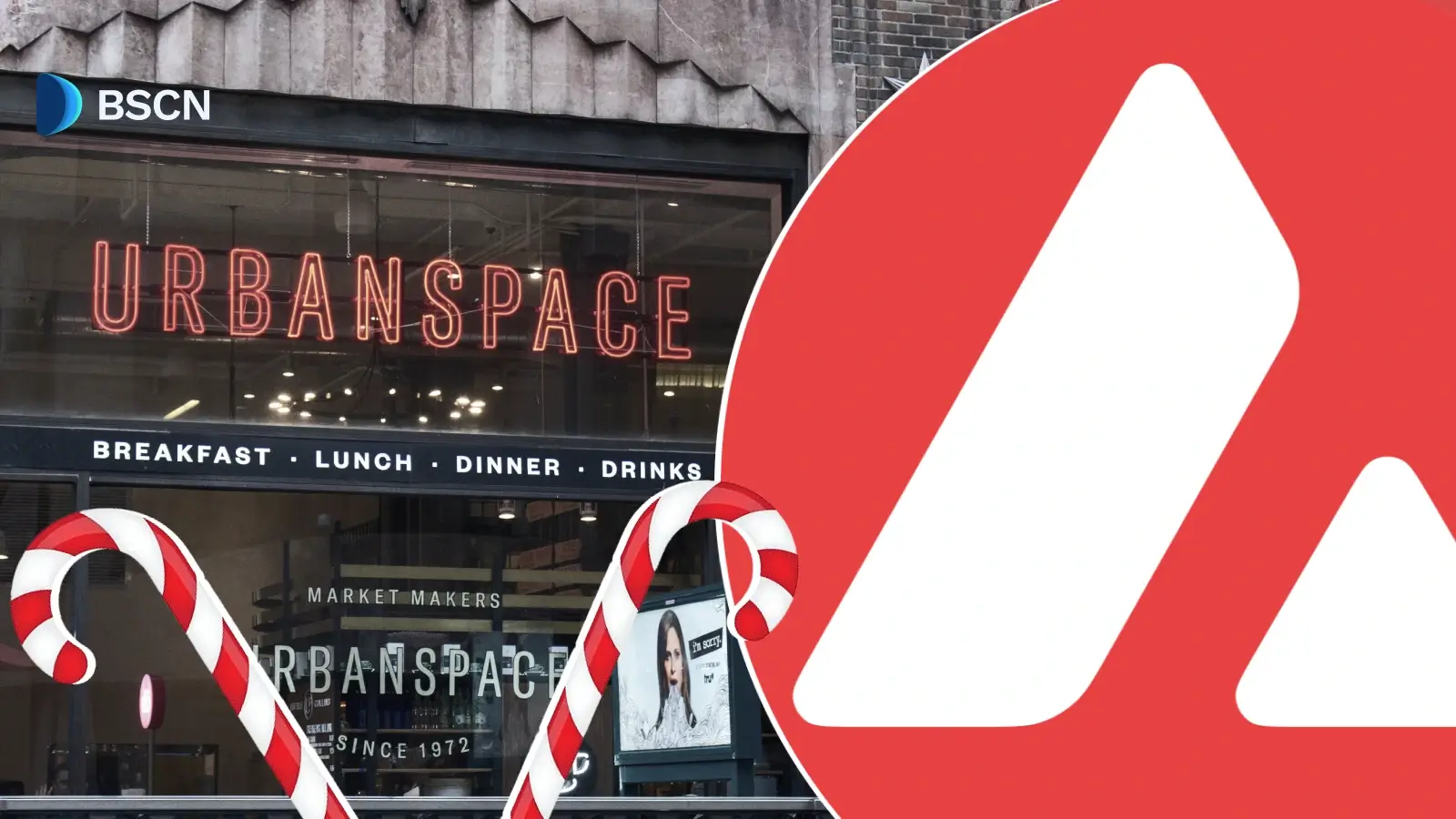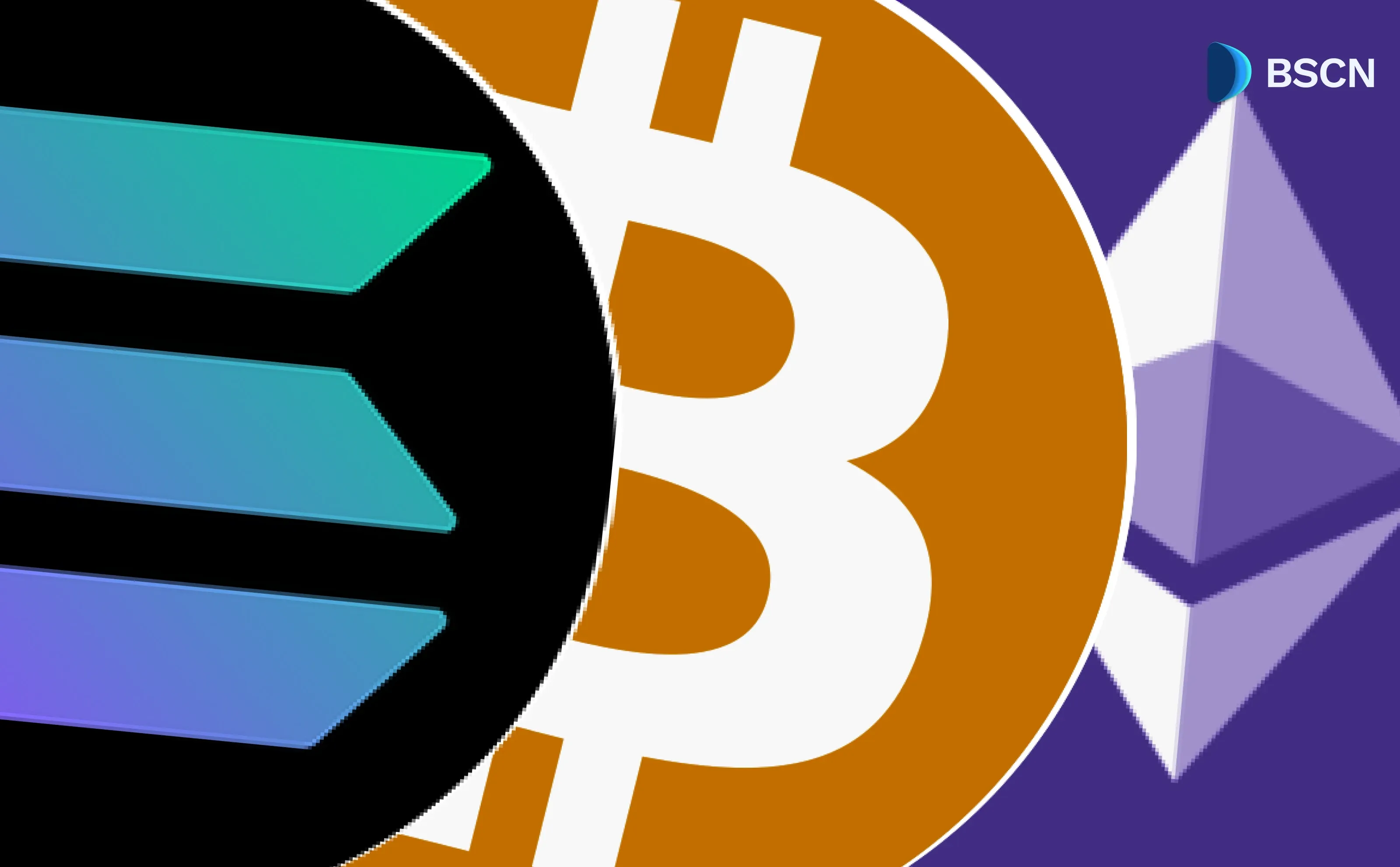Research
(Advertisement)
New Bybit Listings to Watch in Q4 2025: Top 5 Picks

Explore five new Bybit listings that could thrive in Q4 2025, featuring projects advancing DeFi, Bitcoin finance, and zero-knowledge technologies.
Miracle Nwokwu
October 14, 2025
(Advertisement)
Table of Contents
Bybit has established itself as a key player in the cryptocurrency exchange space, known for its robust trading tools and focus on derivatives. As the platform continues to expand its offerings, the second half of 2025 has brought a fresh wave of listings that could draw significant attention from traders and investors. These new additions span various sectors within the blockchain ecosystem, from layer-2 scaling solutions to decentralized infrastructure and Bitcoin-focused finance protocols. Each project addresses specific challenges in the crypto ecosystem, such as scalability, network performance, and asset yield generation.
While Q4 market conditions remain volatile, these listings provide opportunities for users to engage with emerging technologies that are poised for further integration into broader financial systems. Below, we explore five potential standout projects already on Bybit, examining their core mechanics and potential implications for the market.
1. Linea ($LINEA)
Linea operates as a layer-2 network designed to bolster Ethereum's capabilities, functioning as a zero-knowledge Ethereum Virtual Machine (zkEVM) rollup. Developed by Consensys, it emphasizes Ethereum equivalence, meaning developers can deploy applications with minimal adjustments from the mainnet. This compatibility has positioned Linea as a practical choice for projects seeking lower transaction costs without sacrificing security, as it inherits Ethereum's robust consensus mechanisms. Since its mainnet launch, Linea has processed millions of transactions, supporting a growing array of decentralized applications in areas like decentralized finance (DeFi) and non-fungible tokens (NFTs). Its focus on driving value back to Ethereum's mainnet distinguishes it from competitors that might prioritize independent ecosystems.
Key Features
One of Linea's standout elements is its use of zero-knowledge proofs to batch transactions efficiently, reducing gas fees and improving throughput. Users can bridge assets from over 30 networks seamlessly, which simplifies onboarding and enhances liquidity. The platform also includes tools like the Linea Hub, which aggregates apps, tokens, and bridging options in one interface, making it easier for newcomers to navigate.
Recent integrations, such as native ETH yield through staking rewards distributed to liquidity providers, add another layer of utility. This feature allows bridged ETH to generate returns, potentially attracting more capital to the network. Additionally, Linea's security is reinforced by state reconstruction capabilities, achieving Stage 0 in the rollup maturity framework, which ensures reliable data availability and fault proofs.
Tokenomics and Token Utility
The $LINEA token follows a distribution model inspired by Ethereum's genesis, with 85% allocated to ecosystem development—75% for a fund supporting builders and public goods, and 10% for early users—while 15% goes to the Consensys treasury with a five-year lockup. This structure avoids heavy insider allocations, promoting long-term alignment. Total supply is capped at around 10 billion tokens, with current prices hovering near $0.02 USD based on recent market data.
Utility-wise, $LINEA serves as an economic coordination tool: it rewards real usage through staking incentives, bootstraps applications via grants, and funds Ethereum's R&D. Holders can participate in governance, influencing protocol upgrades and resource allocation, which ties directly into Linea's goal of strengthening the broader Ethereum ecosystem.
2. Doublezero ($2Z)
Doublezero introduces a decentralized physical infrastructure network (DePIN) tailored for high-performance blockchain operations, particularly validators. Built on Solana as an SPL token, it addresses bottlenecks in global connectivity by providing dedicated, low-latency pathways for distributed systems. This is especially relevant for networks handling high transaction volumes, where public internet limitations like jitter and shared bandwidth can hinder efficiency. Doublezero's mainnet-beta went live in September 2025, already supporting over 25% of Solana's mainnet stake, demonstrating its rapid adoption among operators seeking improved vote credits and reduced skip rates.
Key Features
At its core, Doublezero offers purpose-built networking that increases bandwidth and minimizes latency through custom routes and fiber links. Validators connect via specialized devices, enabling features like multicast delivery for efficient data propagation. The protocol's multi-tenancy design allows it to serve multiple blockchains, starting with Solana, Aptos, and Avalanche. Security and performance are enhanced by hardware accelerations, such as FPGA edge filtration, which filters out unnecessary traffic.
Recent milestones include a no-action letter from the SEC, providing regulatory clarity that could encourage wider institutional involvement. Overall, these elements make Doublezero a foundational layer for chains aiming for speeds up to 100 million transactions per second.
Tokenomics and Token Utility
The $2Z token has a total supply of approximately 10 billion, with allocations focused on network participants: validators received priority in a token sale that raised significant interest. Current pricing is around $0.26 USD, with a market cap exceeding $900 million. Tokenomics emphasize sustainability, with no changes to team or investor portions post-launch.
Utility includes staking for performance-based rewards, governance voting on protocol decisions, and payments for premium network services. This creates a feedback loop where active participants earn more, incentivizing contributions to the network's growth and stability.
3. Hyperliquid ($HYPE)
Hyperliquid stands out as a layer-1 blockchain optimized for financial services, featuring an integrated decentralized exchange (DEX) for perpetual futures trading. Its custom HyperBFT consensus achieves sub-second block times, making it suitable for high-frequency trading and on-chain applications. The platform's vision is a fully on-chain financial system where users can trade, build, and launch tokens without intermediaries. Since its inception, Hyperliquid has handled billions in trading volume, appealing to traders who value speed and low fees over traditional centralized exchanges.
Key Features
Hyperliquid's architecture prioritizes performance, with tools for advanced order types and leverage up to 50x on select assets. It supports a wide range of perpetuals, including crypto, forex, and commodities, all settled on-chain. Recent updates include community-driven listings, allowing users to long or short emerging tokens like $ZEC or $APEX. The platform's modular design enables seamless app development, with governance tied to community ownership. Integration with tools like Chainlink for oracles ensures accurate pricing, while its focus on user-built applications fosters innovation in DeFi and beyond.
Tokenomics and Token Utility
$HYPE, the native token, has a max supply of about 1 billion, trading near $39 USD with a market cap around $39 billion. Distribution emphasizes community: anyone can stake for rewards and participate in governance.
Utility extends to securing the network, voting on upgrades, and accessing premium features. As trading volumes grow—recently exceeding $800 million daily—$HYPE captures value through fees and staking yields, positioning it as a key asset for those invested in on-chain finance.
4. Lombard Finance ($BARD)
Lombard Finance focuses on bringing Bitcoin into DeFi through its LBTC token, a yield-bearing, fully backed Bitcoin wrapper. By enabling BTC holders to earn returns while maintaining exposure, Lombard bridges traditional Bitcoin storage with on-chain opportunities. Backed by partnerships like Babylon for staking, it has mobilized over 23,000 BTC, representing a significant share of the Bitcoin liquid staking market.
Key Features
LBTC integrates across major chains, allowing use in lending, borrowing, and trading protocols. Security is multilayered, with Chainlink for cross-chain transfers, Symbiotic for restaking, and compliance tools from TRM and Elliptic. Recent expansions include spot trading on exchanges like Bybit, unlocking new use cases. The protocol's vaults, already at $500 million TVL, automate yield strategies, while its SDK facilitates integrations with wallets and platforms.
Tokenomics and Token Utility
$BARD has a 1 billion total supply designed for long-term growth, and trades around $0.66 USD with a market cap around $150 million as of writing. Allocations prioritize ecosystem: grants for builders, governance, and security staking.
Utility includes voting on protocol changes, securing transfers, and accessing premium features. As Lombard expands, $BARD drives network effects through the Liquid Bitcoin Foundation's funding initiatives.
5. Boundless ($ZKC)
Boundless provides a decentralized marketplace for zero-knowledge proofs (ZKPs), enabling scalable computation across blockchains. Using RISC Zero's zkVM, it allows any chain to offload verification, addressing compute limitations without compromising security. Its mainnet-beta launched in 2025, initiating "The Signal" initiative to ZK-prove all chains.
Key Features
The protocol's prover network generates ZKPs for rollups and apps, reducing costs and enhancing interoperability. Multi-chain rollout starts with Base, with hardware accelerations making proofs 10x cheaper by year-end. Recent collaborations emphasize accessibility, removing barriers for developers building cross-chain solutions.
Tokenomics and Token Utility
$ZKC trades near $0.19 USD, with a supply of 1 billion and allocations adjusted for community sales (up to 6.85%) and airdrops (6.63%).
Utility involves staking for rewards, governance, and prover incentives. This supports the network's growth, ensuring sustainable scaling.
What’s Next for These Projects Post-Listing
With their Bybit listings, these projects are set to leverage increased liquidity and visibility for ambitious expansions. Linea plans to roll out native ETH yield mechanisms by year-end, distributing staking rewards to liquidity providers and advancing its 2026 roadmap with protocol-level ETH burns to enhance scarcity. This could solidify its role as Ethereum's preferred L2, potentially integrating more DeFi primitives and expanding its ecosystem fund for grants.
Doublezero aims to introduce multicast delivery in fall 2025, followed by FPGA edge filtration in 2026, adding more cities and links to its network. Post-listing, expect broader adoption across chains like Solana and Aptos, with $2Z staking driving validator participation and governance decisions on multi-tenancy features.
Hyperliquid's trajectory involves continued perp listings and app launches, building toward a comprehensive on-chain financial hub. Q4 could see enhancements in consensus for even faster blocks, alongside community governance votes on fee structures, capitalizing on its $300 billion+ notional volume to attract institutional traders.
Lombard Finance enters Phase II, focusing on Bitcoin capital markets with new wrapped BTC primitives and tokenized products. SDK integrations with exchanges like Binance and wallets will accelerate, while vaults expand TVL. The Liquid Bitcoin Foundation will deploy $BARD for grants, fostering ecosystem growth and compliance-focused partnerships in regions like Korea.
Boundless targets multi-chain deployments, emphasizing cheap, fast proofs through hardware optimizations. Q4 initiatives include events and collaborations under "The Signal," proving more chains and reducing costs by 10x, enabling developers to build scalable apps without chain-specific constraints.
These developments highlight a maturing crypto sector, where listings on top crypto exchanges serve as catalysts for real-world utility. Traders should monitor on-chain metrics and governance proposals for insights, always considering risks like market fluctuations and regulatory shifts.
Sources:
- Linea zkEVM Layer-2 Network (Official website): https://linea.build
- DoubleZero High-Performance DePIN (Official website): https://doublezero.xyz
- Hyperliquid Decentralized Exchange (Official website): https://app.hyperliquid.xyz
- Lombard Bitcoin DeFi (Official website): https://www.lombard.finance
- Boundless ZKP Marketplace (Official site): https://boundless.network
- Onchain market data (Coingecko): https://www.coingecko.com/
Read Next...
Frequently Asked Questions
How does Linea ($LINEA) enhance Ethereum scalability?
Linea is a zkEVM layer-2 solution built by Consensys that boosts Ethereum’s scalability while maintaining security and developer compatibility. It uses zero-knowledge proofs to batch transactions, reducing gas fees and improving throughput. Its ecosystem prioritizes Ethereum alignment, enabling developers to deploy mainnet-compatible applications at a fraction of the cost.
What makes Doublezero ($2Z) important for blockchain networks?
Doublezero offers a decentralized physical infrastructure network (DePIN) focused on high-speed connectivity for validators. Built on Solana, it addresses latency and bandwidth issues, enhancing blockchain performance across Solana, Aptos, and Avalanche. Its low-latency fiber routing and FPGA-based hardware filtration make it essential for next-gen decentralized systems.
How is Lombard Finance ($BARD) bridging Bitcoin and DeFi?
Lombard Finance introduces LBTC, a yield-bearing, fully backed Bitcoin wrapper that allows BTC holders to earn returns in DeFi protocols. By integrating with partners like Babylon and Chainlink, it enables staking, lending, and cross-chain usage. Its mission is to bring Bitcoin liquidity into the broader DeFi ecosystem without compromising security.
What is Boundless ($ZKC) and how does it use zero-knowledge proofs?
Boundless provides a ZK-proof marketplace that enables blockchains to outsource computational verification using RISC Zero’s zkVM technology. This reduces on-chain costs and enhances scalability across multiple chains. Its network of provers generates cost-effective proofs, making it easier for developers to deploy privacy-preserving and interoperable applications.
Disclaimer
Disclaimer: The views expressed in this article do not necessarily represent the views of BSCN. The information provided in this article is for educational and entertainment purposes only and should not be construed as investment advice, or advice of any kind. BSCN assumes no responsibility for any investment decisions made based on the information provided in this article. If you believe that the article should be amended, please reach out to the BSCN team by emailing [email protected].
Author
 Miracle Nwokwu
Miracle NwokwuMiracle holds undergraduate degrees in French and Marketing Analytics and has been researching cryptocurrency and blockchain technology since 2016. He specializes in technical analysis and on-chain analytics, and has taught formal technical analysis courses. His written work has been featured across multiple crypto publications including The Capital, CryptoTVPlus, and Bitville, in addition to BSCN.
(Advertisement)
Latest News
(Advertisement)
Crypto Project & Token Reviews
Project & Token Reviews
Comprehensive reviews of crypto's most interesting projects and assets
Learn about the hottest projects & tokens
Latest Crypto News
Get up to date with the latest crypto news stories and events
















